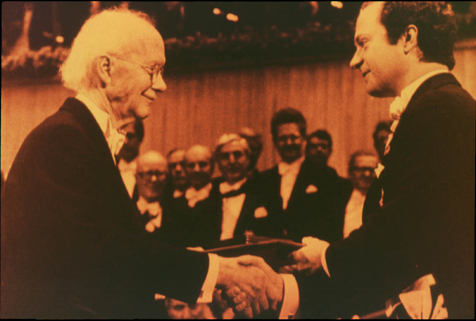
Faculty Research 1980 - 1989
Full-term development after transplantation of parthenogenetic embryonic nuclei into fertilized mouse eggs.
Document Type
Article
Publication Date
1982
Keywords
Blastocyst: ph, Cell-Nucleus: tr, Female, Mice, Mice-Inbred-Strains: em, Parthenogenesis, Pregnancy, Preimplantation-Phase, SUPPORT-NON-U-S-GOVT, SUPPORT-U-S-GOVT-NON-P-H-S, SUPPORT-U-S-GOVT-P-H-S
First Page
1912
Last Page
1916
JAX Source
Proc-Natl-Acad-Sci-USA. 1982 Mar; 79(6):1912-6.
Grant
HD10381
Abstract
Diploid parthenogenetically activated oocytes were obtained after gonadotropin-induced ovulation of virgin females of the LT/Sv (LT) inbred mouse strain. These oocytes cleave spontaneously and develop into blastocysts which implant in the uterus but die within a few days. We examined the developmental potential of nuclei from parthenogenetic embryos after transplantation into fertilized eggs. The inner cell mass (ICM) and trophectoderm (TE) of LT parthenogenetic blastocysts were mechanically isolated and dissociated into single cells. Their nuclei were then injected into fertilized C57BL/6J eggs from which the male and female pronuclei were removed. Of 94 eggs injected with TE cell nuclei, 4 embryos developed to the morula stage; all 4 showed abnormalities and subsequently became arrested in development. Enzyme analysis of these embryos revealed that TE cell nuclei could neither independently initiate or support preimplantation development. However, of 54 eggs injected with nuclei from ICM cells, 3 morulae and 3 blastocysts developed and enzyme analyses of them confirmed that the preimplantation development of 2 embryos was supported by transplanted parthenogenetic nuclei. In another experimental series, 3 morulae and 4 blastocysts developed from 107 eggs injected with ICM nuclei and were transferred to uteri of foster mothers to ascertain their postimplantation development. Four female offspring were born and all of them showed a diploid karyotype and expressed enzyme activity of only the LT genotype. One female proved to be fertile and transmitted the parthenogenetic genome to the next generation. These results demonstrate that the nucleus from LT parthenogenetic blastocysts contains a complete genome necessary to support development of an adult mouse. Therefore, the early postimplantation death of parthenogenetic embryos does not seem to be related to an aberrant genotype but rather to undefined mechanisms associated with fertilization and normal morphogenetic processes.
Recommended Citation
Hoppe PC,
Illmensee K.
Full-term development after transplantation of parthenogenetic embryonic nuclei into fertilized mouse eggs. Proc-Natl-Acad-Sci-USA. 1982 Mar; 79(6):1912-6.

